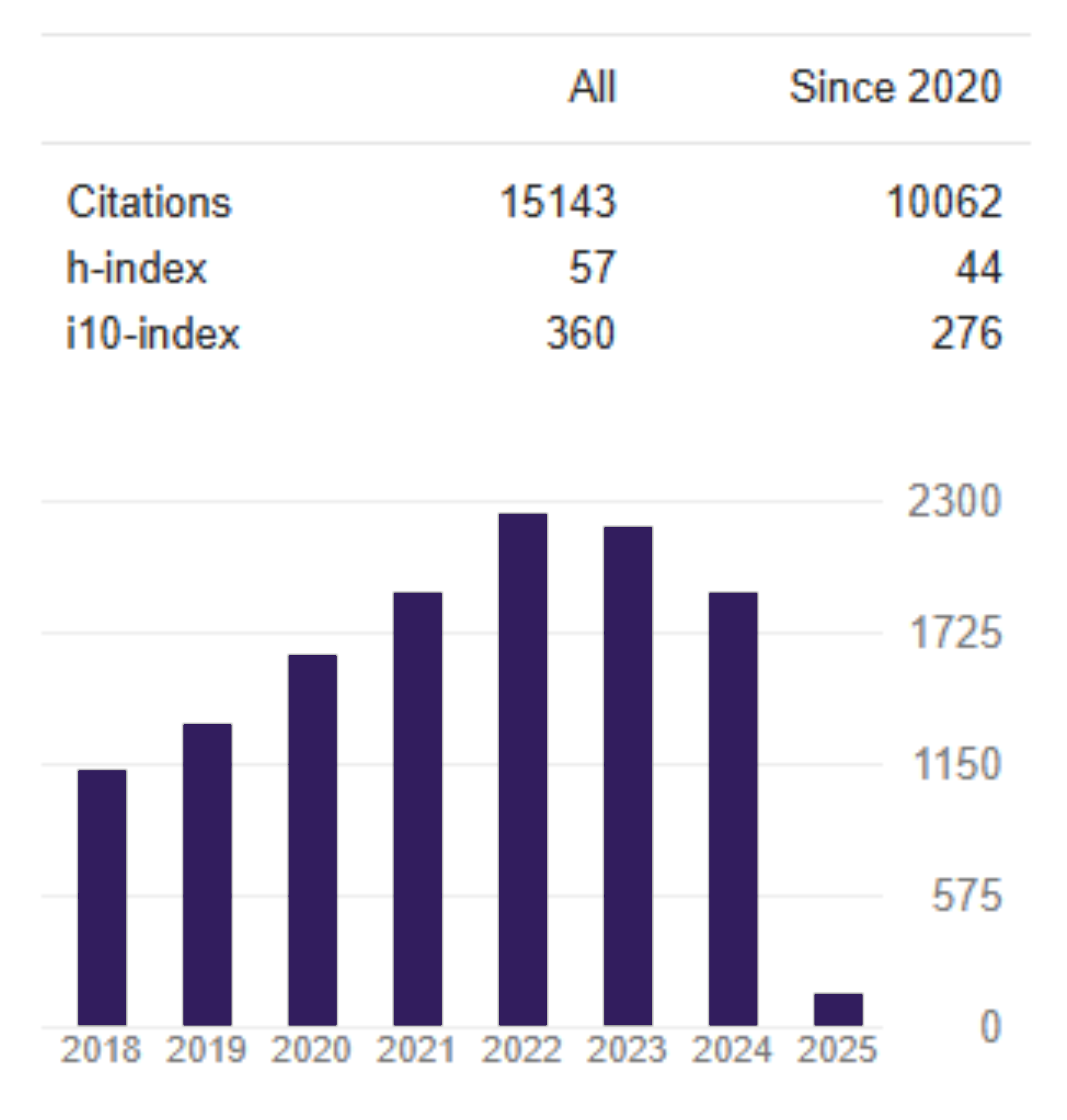The Firm Life Cycle and Debt Maturity Structure: Evidence from ASEAN Countries
DOI:
https://doi.org/10.26905/jkdp.v27i2.9958Keywords:
Debt maturity, Firm life cycle, Growth stagesAbstract
This study aims to examine the firm’s debt maturity structure policy across the firm life cycle stage in five ASEAN countries, namely Indonesia, Malaysia, Singapore, Thailand and Vietnam. The Firm life cycle stages are classified based on its cashflow pattern into four stages, namely introduction, growth, mature, and decline. The study was conducted using 2769 samples of non-financial listed companies in these five ASEAN countries in the period 2007-2020. The data analysis method used is a panel data model with a fixed effect. The results of the study from the research conducted show that the company's life cycle in the introduction and growth stages chooses to use long-term debt compared to companies in the mature and decline stages. It’s possible that during introduction and growth stages, firms are overloaded with many investment opportunities that they want to invest. Internal funds might not be enough for them and they opt to acquire external debt such as long-term debt.
Â
DOI: 10.26905/jkdp.v27i2.9958
Downloads
References
Ahmed, B., Akbar, M., Sabahat, T., Ali, S., Hussain, A., Akbar, A., & Hongming, X. (2021). Does firm life cycle impact corporate investment efficiency? Sustainability (Switzerland), 13(1), 1–13. https://doi.org/10.3390/su13010197
Akbar, M., Hussain, A., Sokolova, M., & Sabahat, T. (2022). Financial Distress, Firm Life Cycle, and Corporate Restructuring Decisions: Evidence from Pakistan’s Economy. Economies, 10(7), 1–12. https://doi.org/10.3390/economies10070175
Alqahtani, J., Duong, L., Taylor, G., & Eulaiwi, B. (2022). Outside directors, firm life cycle, corporate financial decisions and firm performance. Emerging Markets Review, 50(June 2020), 100820. https://doi.org/10.1016/j.ememar.2021.100820
Bakarich, K. M., Hossain, M., & Weintrop, J. (2019). Different time, different tone: Company life cycle. Journal of Contemporary Accounting and Economics, 15(1), 69–86. https://doi.org/10.1016/j.jcae.2018.12.002
Castro, P., Tascón Fernández, M. T., Amor-Tapia, B., & de Miguel, A. (2016). Target leverage and speed of adjustment along the life cycle of European listed firms. BRQ Business Research Quarterly, 19(3), 188–205. https://doi.org/10.1016/j.brq.2016.01.003
Chang, S.-C., Chiu, S.-C., & Wu, P.-C. (2017). The Impact of Business Life Cycle and Performance Discrepancy on R&D Expenditures-Evidence from Taiwan. Accounting and Finance Research, 6(3), 135. https://doi.org/10.5430/afr.v6n3p135
Chen, H., & Yoon, S. S. (2022). Does technology innovation in finance alleviate financing constraints and reduce debt-financing costs? Evidence from China. Asia Pacific Business Review, 28(4), 467–492. https://doi.org/10.1080/13602381.2021.1874665
Chiu, W. C., King, T. H. D., & Wang, C. W. (2021). Debt maturity dispersion and the cost of bank loans. Journal of Corporate Finance, 70(January), 102049. https://doi.org/10.1016/j.jcorpfin.2021.102049
Choi, J., Hackbarth, D., & Zechner, J. (2018). Corporate debt maturity profiles. Journal of Financial Economics, 130(3), 484–502. https://doi.org/10.1016/j.jfineco.2018.07.009
Chuang, K. S. (2020). Private placements, market discounts and firm performance: the perspective of corporate life cycle analysis. Review of Quantitative Finance and Accounting, 54(2), 541–564. https://doi.org/10.1007/s11156-019-00798-4
D’Amato, A. (2020). Capital structure, debt maturity, and financial crisis: empirical evidence from SMEs. Small Business Economics, 55(4), 919–941. https://doi.org/10.1007/s11187-019-00165-6
Datta, S., Doan, T., & Iskandar-Datta, M. (2019). Policy uncertainty and the maturity structure of corporate debt. Journal of Financial Stability, 44, 100694. https://doi.org/10.1016/j.jfs.2019.100694
Diah, P. ., & Putri, W. (2021). The Effect of Operating Cash Flows, Sales Growth, and Operating Capacity in Predicting Financial Distress. International Journal of Innovative Science and Research Technology, 6(1), 643–644. www.ijisrt.com638
Dickinson, V. (2011). Cash flow patterns as a proxy for firm life cycle. Accounting Review, 86(6), 1969–1994. https://doi.org/10.2308/accr-10130
Drobetz, W., Halling, M., & Schrrder, H. (2015). Corporate Life-Cycle Dynamics of Cash Holdings. SSRN Electronic Journal, 15. https://doi.org/10.2139/ssrn.2578315
Faff, R., Kwok, W. C., Podolski, E. J., & Wong, G. (2016). Do corporate policies follow a life-cycle? Journal of Banking and Finance, 69(April), 95–107. https://doi.org/10.1016/j.jbankfin.2016.04.009
Gajdosikova, D., Lăzăroiu, G., & Valaskova, K. (2023). How Particular Firm-Specific Features Influence Corporate Debt Level: A Case Study of Slovak Enterprises. Axioms, 12(2), 1–18. https://doi.org/10.3390/axioms12020183
GarcÃa, C. J., & Herrero, B. (2021). Female directors, capital structure, and financial distress. Journal of Business Research, 136(November 2020), 592–601. https://doi.org/10.1016/j.jbusres.2021.07.061
Habib, A., & Hasan, M. M. (2017). Firm life cycle, corporate risk-taking and investor sentiment. Accounting and Finance, 57(2), 465–497. https://doi.org/10.1111/acfi.12141
Habib, A., & Hasan, M. M. (2019). Corporate life cycle research in accounting, finance and corporate governance: A survey, and directions for future research. International Review of Financial Analysis, 61, 188–201. https://doi.org/10.1016/j.irfa.2018.12.004
Hasan, M. M., & Cheung, A. (Wai K. (2018). Organization capital and firm life cycle. Journal of Corporate Finance, 48, 556–578. https://doi.org/10.1016/j.jcorpfin.2017.12.003
Keasey, K., Martinez, B., & Pindado, J. (2015). Young family firms: Financing decisions and the willingness to dilute control. Journal of Corporate Finance, 34, 47–63. https://doi.org/10.1016/j.jcorpfin.2015.07.014
Khuong, N. V., Anh, L. H. T., & Van, N. T. H. (2022). Firm life cycle and earnings management: The moderating role of state ownership. Cogent Economics and Finance, 10(1). https://doi.org/10.1080/23322039.2022.2085260
Loderer, C., Stulz, R., & Waelchlig, U. (2017). Firm rigidities and the decline in growth opportunities. Management Science, 63(9), 3000–3020. https://doi.org/10.1287/mnsc.2016.2478
Martins, H. C., Schiehll, E., & Terra, P. R. S. (2020). Do shareholder protection and creditor rights have distinct effects on the association between debt maturity and ownership structure? Journal of Business Finance and Accounting, 47(5–6), 708–729. https://doi.org/10.1111/jbfa.12430
Ng, H. C., & Cheng, F. F. (2020). The impact of financial flexibility on debt maturity structure for Australian and Malaysian firms. Afro-Asian Journal of Finance and Accounting, 10(2), 235–261. https://doi.org/10.1504/AAJFA.2020.106260
Park, B. J. (2021). Corporate social and financial performance: the role of firm life cycle in business groups. Sustainability (Switzerland), 13(13). https://doi.org/10.3390/su13137445
Rachma Sari, K., Martini, R., Almira, N., Hartati, S., & Husin, F. (2022). Prediction of Bankruptcy Risk Using Financial Distress Analysis. Golden Ratio of Finance Management, 2(2), 77–86. https://doi.org/10.52970/grfm.v2i2.127
Yahaya, O. A., & Onyabe, J. M. (2020). Firm Life Cycle and Financial Performance: Evidence from Nigeria. Journal of Accounting and Finance in Emerging Economies, 6(3), 723–732. https://doi.org/10.26710/jafee.v6i3.1332
Zhang, X., & Xu, L. (2021). Firm life cycle and debt maturity structure: evidence from China. Accounting and Finance, 61(1), 937–976. https://doi.org/10.1111/acfi.12600
Downloads
Published
Issue
Section
License

This work is licensed under a Creative Commons Attribution-ShareAlike 4.0 International License.



